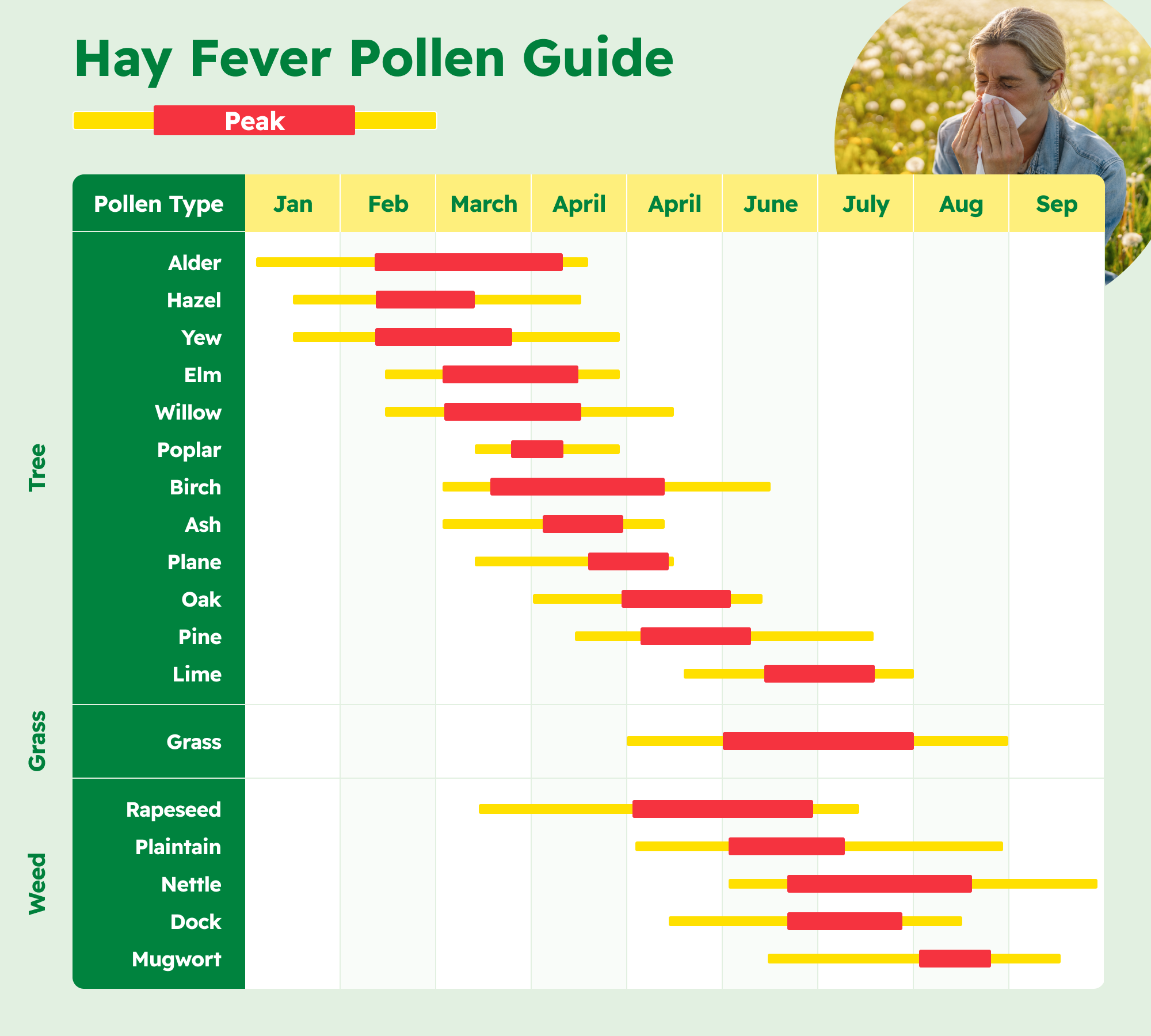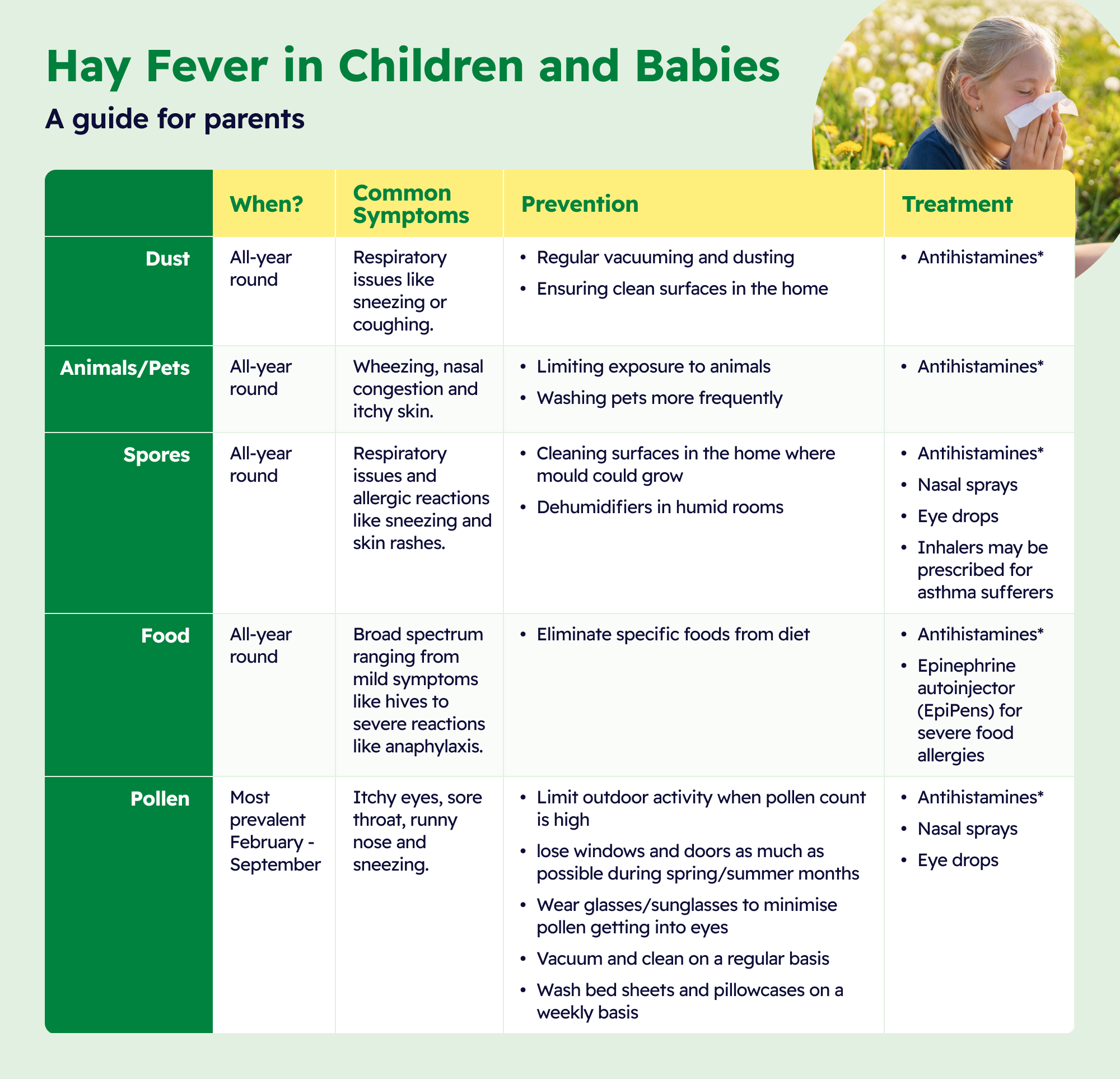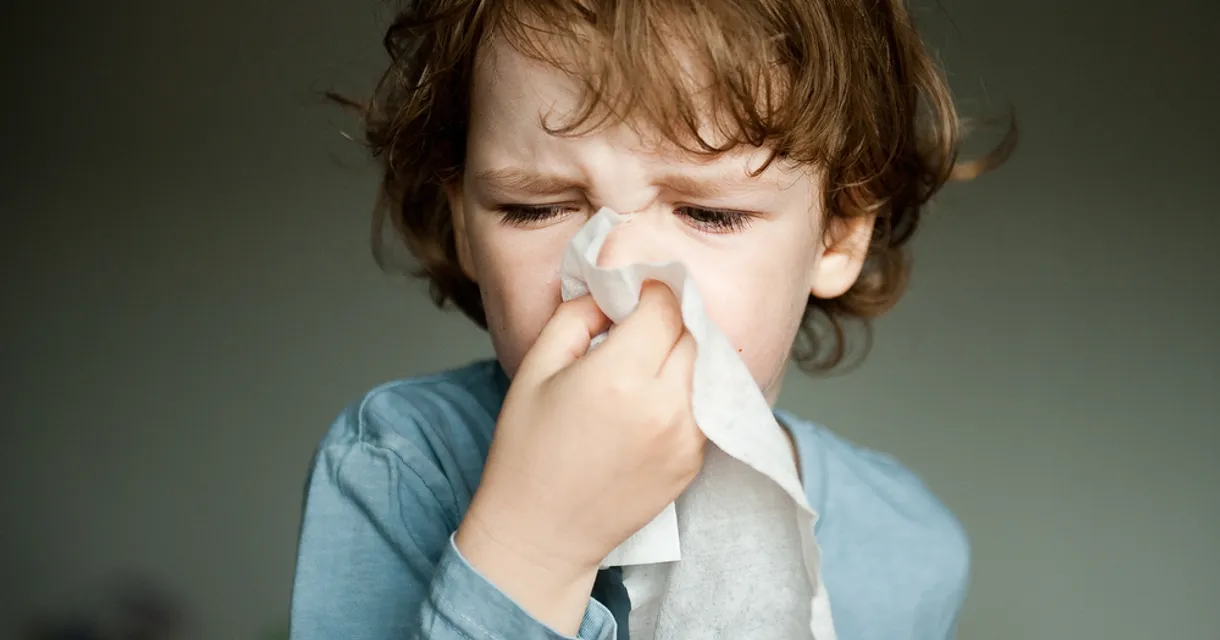Managing allergies and hayfever in babies and young children can be challenging, especially if they’re too young to be able to communicate exactly how they’re feeling. According to the most recent data from Allergyuk.org, 40% of children have been diagnosed with an allergy – so you’re not alone.
As a parent or caregiver, you can use our expert guide for advice on managing symptoms and the best allergy and hayfever treatment for kids. If their allergies are severe or you’re worried about the wellbeing of your little one, speak to your GP or our online doctor to diagnose your allergies and offer a tailored treatment plan.
Symptoms of Allergies in Children and Treatment Options
Allergy symptoms can impact a child's health, well-being, socialising and education, and can be distressing for parents and caregivers.
Whether they’re a baby, toddler, all the way through to early teen, being aware of allergy triggers, symptoms and treatments means you can offer support and relief when they need it most. Here are some of the most common allergy triggers and how to spot them:
Dust
Dust mites are a common allergen for children, often found in bedding, carpets and upholstered furniture.
Symptoms to look out for: Respiratory issues like sneezing or coughing.
Treatment: Vacuuming regularly and ensuring that surfaces are clean and dust-free is a good way to eliminate the presence of dust mites. But, in many circumstances, antihistamines are a good way of managing dust mite allergy symptoms in children. Read on for more information on antihistamine for kids.
Animals/Pets
Pet dander, particularly from cats and dogs, can trigger allergic reactions in children. Pet saliva and urine particles often trigger allergies; and because cats and dogs groom themselves by licking, these allergens are transferred to their skin and hair, then become airborne.
Symptoms to look out for: Wheezing, nasal congestion and itchy skin.
Treatment: Limiting exposure to animals, or washing pets more frequently can be a good way to limit the dander or pet particles in the air. Antihistamines are also a reasonably priced way to nip symptoms such as sneezing, runny nose and itchy eyes in the bud.
Spores
Mold spores, commonly found in damp areas, can bring on allergies in children.
Symptoms to look out for: Respiratory issues and allergic reactions like sneezing and skin rashes.
Treatment: Avoiding exposure to mould spores is most important, and therefore cleaning surfaces and environments that would allow mould to grow is crucial. Dehumidifiers can also be used to remove water vapour from the air. As far as medication goes, antihistamine can treat mild symptoms, as well as nasal sprays or eye drops. If your child also suffers from asthma, an inhaler may be prescribed.
Food
Common food allergens like peanuts, milk, eggs and shellfish can cause allergic reactions in children.
Symptoms to look out for: Broad spectrum ranging from mild symptoms like hives to severe reactions like anaphylaxis.
Treatment: Most food allergies are treated by simply eliminating specific foods from diets, however, non-prescription antihistamines can help in some instances, but for severe allergies and symptoms of anaphylaxis, seek emergency medical help.
Pollen
Pollen from trees, grasses and weeds can cause seasonal allergic reactions in children and babies. This is known as hayfever, which can occur in babies, children and adults alike.
Symptoms to look out for: Itchy eyes, sore throat, runny nose and sneezing.
Treatment: As well as limiting outdoor activity when the pollen count is high, antihistamine for kids is a great way of managing symptoms.
|
|
When? |
Common Symptoms |
Prevention |
Treatment |
|---|---|---|---|---|
|
Dust |
All-year round |
Respiratory issues like sneezing or coughing. |
|
|
|
Animals/Pets |
All-year round |
Wheezing, nasal congestion and itchy skin. |
|
|
|
Spores |
All-year round |
Respiratory issues and allergic reactions like sneezing and skin rashes. |
|
|
|
Food |
All-year round |
Broad spectrum ranging from mild symptoms like hives to severe reactions like anaphylaxis. |
|
|
|
Pollen |
Most prevalent February - September |
Itchy eyes, sore throat, runny nose and sneezing. |
|
|
*See below for antihistamine guidance and dosage for babies and children.
By understanding triggers, recognising symptoms early and working with healthcare professionals to get medication, you can help minimise the impact and improve your child's quality of life.

Hayfever Symptoms in Babies and Children
One of the most common allergies in babies and children is hayfever, with up to 15% of all children affected by it. As hayfever is caused by the body’s immune system overreacting to pollen, immediate signs and symptoms of hayfever in babies and children can include the following:
Common hayfever symptoms in children
- Sneezing
- Itchy, runny or blocked nose
- Itchy or sore ears
- Itchy, red or watery eyes
- Itchy or sore throat
- Coughing (from postnatal drip)
- Pain around temples, or headache
Less common hayfever symptoms in children
- Loss of sense of smell
- Facial pain from blocked sinuses
Keep an eye out for these symptoms in your children from around early February, into September, as this is when the pollen count increases.
Remember, similarly to adults, babies and children can be allergic to more than one type of pollen; so use our tree, grass and weed pollen calendar to determine which specific type of pollen your child or baby may be most impacted by, and make a note of dates so that you can manage their symptoms in future years.
Antihistamine For Kids
Treating hayfever and many allergies can be managed effectively by taking antihistamine. Many parents and caregivers ask if antihistamine can be given to babies and young children, and the answer is yes. Just make sure that you’re giving your kids antihistamines in the right format for their age:
- Children aged 2 to 5 years can take cetirizine liquid or syrup bought from pharmacies or prescribed by their doctor.
- Children aged 6 to 11 years and over can take cetirizine tablets (typically halved) and liquid that you buy from pharmacies and shops.
- Children aged 12+ can take hayfever tablets the same as an adult would.
Don’t forget to take a look through our guide to choosing the best antihistamine for dosage, side effects, effectiveness and more on the best hayfever tablets.
Browse our range of effective treatments to help you manage your child’s hayfever symptoms and reduce the impact they have on their daily life. Always be sure to ask your GP or pharmacist for advice on the best option for your little ones.

Next steps
If you’re concerned about allergies in your kids, our expert pharmacists recommend:
- Seeking immediate, emergency medical attention if you suspect symptoms of anaphylaxis.
- Keeping a diary of symptoms. This can help you pinpoint exactly what your children are allergic to and get the correct treatment.
- Educating your children about their allergies. Teaching them to recognise and avoid triggers, as well as how to manage symptoms, can empower them to take control of their own health.
- Keeping your home environment allergen-free. This may involve using air purifiers, regularly hoovering and washing bedding, or keeping windows closed during high pollen seasons.
- Reviewing kids’ allergy treatments with a healthcare provider, pharmacy or online doctor. Ensuring that your child is on the most effective treatment plan, whether it’s antihistamines, nasal sprays or allergy shots.
